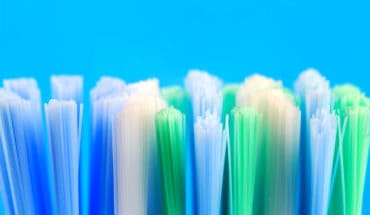Dry frazzled hair is par for the course after the long summer holidays, and multiple dousing with chlorine and salt water can leave hair coarse,
and even – in the case of bleached tresses – green. So how do you start repairing your hair in time for returning to work?
Step 1: Check your diet
You can slather on all manner of masks and serums but none will make lasting improvements if you don’t improve your diet. Give your diet the once-over. Write down now what you’ve eaten for the last three days and take a critical look at what you’re feeding your hair. Up your intake of fresh fruit – ‘hair friendly’ fruits include papaya, pear and avocados. Eating the right fats can ensure you get glossy rather than greasy hair. ‘The essential fatty acids found in mackerel, pumpkin seeds and flax oil will improve the lustre of your hair,’ says dietician Nigel Denby. ‘B-vitamins are important too, particularly biotin (B7) and pantothenic acid (B5) and, as they are water soluble, you should aim for a daily intake. Rich sources of the complete B vitamin complex include bananas, potatoes, lentils and… marmite!’
Step 2: Massage your scalp
Start with a vigorous head massage to improve circulation to the scalp and hair follicles and help relieve tension. Extra blood flow to the scalp helps to encourage healthy hair growth. A hair shaft grows from a follicle for about three years and lasts for another three or four months before falling or being pushed out by the growth of a new hair. Don’t be too anxious about using shampoos with long ingredients lists. Marilyn Sherlock, Chairman of the Institute of Trichologists says there’s nothing wrong with conventional products. ‘All chemicals found in toiletries such as shampoos have been rigorously tested and are widely used, even in products that claim to be more ‘natural’ or ‘herbal’. They are absolutely safe and you’ll find them in products endorsed by top trichologists.’
Step 3: First things first. Deep condition before you shampoo.
‘Use deep conditioners afterwards can leave the hair limp and unmanageable,’ says leading trichologist Philip Kingsley. Keep the conditioner away from the scalp and focus on the ends, the oldest and driest part of your hair. Adjust the temperature of your final rinse to suit your hair type. ‘A warm rinse will stimulate the sebaceous glands, nourishing dry hair while a cold rinse works better for greasy hair, closing the pores on the scalp and cutting sebum production,’ explains Marilyn Sherlock of the Institute of Trichologists. For detangling, start at the ends and slowly work your way up the hair shaft. Never start at the roots.
Step 4: Finishing Touches
If you just can’t ditch your blow-dry routine, be sure to hold the hairdryer at least 12 inches away from your head and don’t aim for bone-dry hair – leave it with a little moisture. If you’re in strong sunlight, treat your hair as you would your skin and look for products with UV filters.
DIY Healthy Hair Tip
Trichologist Philip Kingsley’s all-natural recipe for a conditioning treatment.
Whisk together:
2 Eggs
2oz Double Cream
1oz Castor Oil
1oz Melted Unsalted Butter
1oz Purified Water
Juice of ½ Grapefruit
Massage the treatment into the hair and scalp for 5-10 minutes and then follow with a moisturising shampoo.
- Combination of drugs could prevent thousands of heart attacks - 21st April 2025
- UQ Study Links Poor Teen Diets to Heavy Social Media Use - 21st April 2025
- Gut microbiome could delay onset of type 1 diabetes - 3rd April 2025






